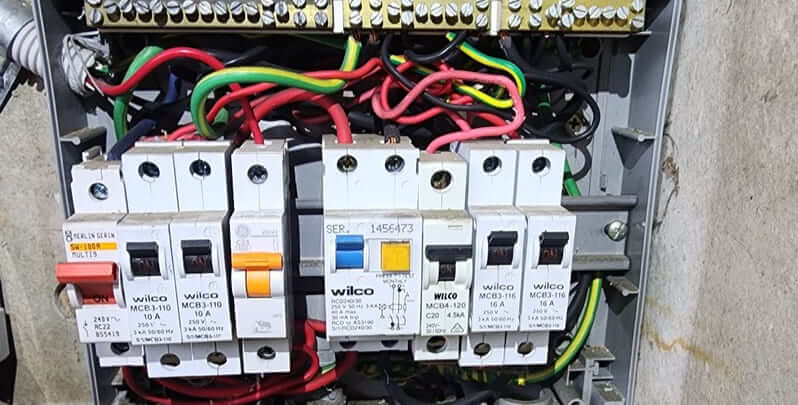5 Warning Signs of an Overloaded Circuit

Recognising the signs of an overloaded circuit in your home is more important than you might think. It's a common yet often overlooked problem, one that can lead to significant hazards if not addressed promptly.
After Hours Electrical is here to outline five key indicators that suggest your circuit may be bearing too much load. We aim to empower you with essential knowledge to ensure your home remains safe and your electrical system operates seamlessly. Join us as we unravel these critical warning signs.
What is an Overloaded Circuit?
Overloaded circuits occur when electrical devices draw more power from a circuit than they can safely supply. This electrical circuit overload is a critical safety concern, potentially leading to electrical emergencies like fires.
Circuit breakers are installed in home electrical systems to prevent overloaded circuits. They do this by cutting off the power supply when the circuit’s power goes beyond its maximum load. Recognising the characteristics of circuit overload, such as flickering lights or a burning smell, is essential for maintaining electrical safety and preventing potentially hazardous issues.

1. Dimming or Flickering Lights
Lighting that begins to flicker or dim is often the most obvious sign of an overloaded circuit. When too many appliances or electrical devices are connected to the same circuit, they can draw more power than the circuit can handle, leading to a visible fluctuation in lighting. This issue indicates a potential electrical overload that could escalate into an electrical emergency.
Circuit breakers in your electrical panel prevent electrical overload. They do so by shutting off the power supply if it exceeds the circuit’s maximum load. However, if lights continue to flicker or dim, it suggests that the circuit wiring may be consistently overloaded or there could be loose connections at the switch covers or wall outlets. Consulting with a licensed electrician can help diagnose and resolve these overloaded circuit issues. It’s the best way to ensure your house’s electrical system operates safely and efficiently.
2. Frequent Circuit Breaker Trips
Frequent trips of the circuit breaker are a clear indicator of an overload in your home’s electrical system. Circuit breakers are designed to protect your electrical system by automatically shutting off the power when the current exceeds safe levels, preventing potential house fires. If a breaker trips regularly, it often points to an overloaded electrical circuit or a fault in the general-purpose circuit.
Using too many high-power devices simultaneously, such as multiple plug in appliances or using power strips extensively, can cause these trips. Overloaded circuits can also result from connecting too many devices to a single circuit, leading to sluggish electronics and dimmed lights. It’s essential to balance how much power is drawn from each circuit and consider installing additional breakers if necessary. Consulting a professional electrician can provide the electrical expertise needed to identify and rectify these issues, ensuring your circuits operate within safe limits.
3. Buzzing Sounds from Electrical Outlets or Switches
Buzzing sounds from outlets or switches are alarming signs of circuit overload and should never be ignored. These noises often indicate that the electrical circuits are under strain, potentially leading to circuit overloads. The sound can be a result of loose connections within the wall plates or because too many devices are plugged into a single circuit, causing excessive demand on the electrical system.
Continued stress on these circuits, especially when using extension cords or overloading general purpose circuits with high-power appliances, can lead to severe issues, including the risk of a house fire. It’s imperative to address these warning signs promptly. Install circuit breakers to help distribute the electrical load more evenly.
However, to diagnose and solve the underlying problem accurately, contacting a qualified electrician is crucial. They can inspect the electrical panel and ensure your home’s wiring is safe and meets the required standards.

4. Electrical Shocks from Outlets or Appliances
Experiencing mild shocks when touching outlets or appliances can be a distressing sign of circuit overload. These shocks often indicate that too much current is flowing through the electrical circuits, potentially due to the use of multiple high-powered devices or extension cords on the same circuit. It’s crucial to consider this a serious warning sign.
Installing additional circuit breakers may help to distribute the load across different circuits, reducing the risk of overload. If these shocks persist, it’s important to cease using the affected outlets and consult emergency electricians to address the issue safely and effectively.
5. Overheating Electrical Appliances or Outlets
Outlets or appliances that become unusually hot to the touch are critical signs of an overloaded circuit. This overheating can occur when multiple high-demand appliances are plugged into the same circuit, exceeding its capacity. Such heat generation not only damages the appliances but also poses a serious fire risk.
Installing additional circuit breakers can help manage the electrical load more effectively, ensuring appliances operate on different circuits to avoid overload. If overheating persists, it’s imperative to unplug the devices and contact a professional to investigate the circuit breaker and electrical system for safety.
Check your Circuits Today!
Recognising the warning signs of an overloaded circuit is paramount in ensuring electrical safety within your home. Signs like flickering lights, frequent circuit breaker trips, buzzing sounds, electrical shocks, and overheating appliances necessitate immediate attention. Addressing these issues promptly can prevent potential hazards, including electrical fires.
It’s crucial to consult with a professional electrician to assess and rectify any electrical problems, ensuring your home’s electrical system functions safely and efficiently. By staying vigilant, you can protect your property and loved ones from the risks of circuit overloads.
Please note: This information is provided for advice purposes only. Regulations differ from state to state, so please consult your local authorities or an industry professional before proceeding with any work. See After Hours Electrical’s Terms & Conditions here.
